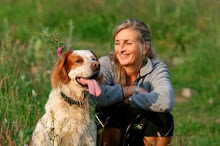 So you’ve got a great new furry pal and you’re imagining yourself bounding across emerald green grass or gleaming, sandy beaches as your new dog lopes gracefully beside you.
So you’ve got a great new furry pal and you’re imagining yourself bounding across emerald green grass or gleaming, sandy beaches as your new dog lopes gracefully beside you.
There’s no doubt that off-leash activity is fun and it looks easy, but by developing good off-leash etiquette you can help ensure your dog is one of the most popular pups off-leash!
In Part 1 of our off-leash etiquette blog posts we explored how to best prepare before going to the off leash area. Now in Part 2 we look to what you should do while there.
Part 2: Off–Leash Etiquette: On Ground
ENTERING THE OFF-LEASH GROUND
Always enter the off-leash area with your dog on lead.
Not only will your dog know who’s in charge right from the start, but it also allows you the opportunity to assess the off-leash environment. Look for the mix and behaviour of the dogs in the area and decide whether it’s suitable for your dog that day. Dogs are similar to people in that they make good friends with some dogs and certainly don’t with others.
If you decide that the off-leash area is suitable, it’s a good idea to ask your dog to sit before letting them go off lead. This helps remind him to listen out for you while he runs free. The command “Go free!” or similar is effective and can be used equally well at home or in the off-leash grounds.
REINFORCE THEIR GOOD “AT HOME” BEHAVIOURS “OUT OF HOME”
You’ll often hear people say that their dogs are very well behaved at home, and just plain silly off-leash.
A good way to address this is to do some reward training while at the off-leash areas. Undertake the training at a quiet time so that your dog is not too easily distracted and include commands such as “Wait”, “Stay”, “Sit” and “Heel”. If done regularly, such directions will ensure you have a dog that can be called out of a pack or held back from a difficult situation.
WHILE AT THE PARK
One of the great things about regular off-leash area visits is that not only does your dog get to meet friends, but so do you. Research from the recent People, Pets and Planning Symposium shows that 84% of pet owners spoke with other pet owners when walking their dog and 50% of dog owners got to know others as a result of their dog.
Ultimately, however, the safety of yours and others dogs is a priority, and one of the behaviours you should definitely look to avoid is pack formation.
Dogs left to their own devices may form a pack and then get into mischief (chasing, running away, etc). If the group of dogs is starting to play rough with each other, it’s best to move away for a short time and call your dog to follow.
No matter how enjoyable the company is that you’re keeping, ensure that the company your dog is keeping is similarly well mannered and sociable.
PICK UP YOUR POO
Take your own bio-degradable doggy bags and pick up after your dog. Responsible dog owners recognise that good “poo protocol” is a must if we want to keep our off-leash area privileges maintained.
While many good off-leash areas do supply doggy bag disposal centres, it’s Murphy’s Law that if you don’t carry your own, the poo bag dispenser will either be empty, or miles from where your dog decides to do his business.
Local by laws in many councils require you to carry bags at all times when walking your dog.
RELAX AND HAVE FUN
A well trained dog should look to you as to how to best behave. It’s a good rule therefore to maintain a relaxed, happy and calm composure.
This shouldn’t be too hard as watching dogs chase each other with the wind in their fur and big, drippy smiles on their snouts, is one of the best entertainments you’ll be likely to find in the local neighbourhood.
 The Birman, or sacred Cat of Burma, is a strikingly beautiful and unusual breed. It has a pale coloured body, dark face, ears, tail and legs, a semi-long coat and white "gloves" on its paws. Its eyes are a beautiful, deep sapphire-blue.
The Birman, or sacred Cat of Burma, is a strikingly beautiful and unusual breed. It has a pale coloured body, dark face, ears, tail and legs, a semi-long coat and white "gloves" on its paws. Its eyes are a beautiful, deep sapphire-blue.









